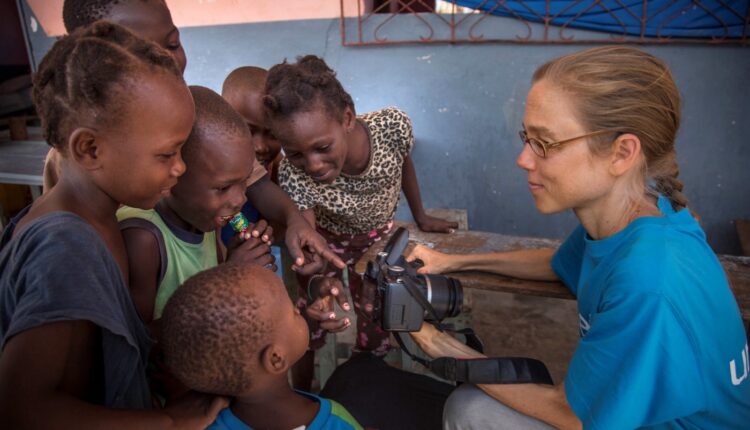Child rights and why they matter
This short course will transform and/or refresh your understanding of child rights and a child rights approach, introduce you to UNICEF’s mandate as it relates to child rights, and inspire you to apply a child rights lens to your everyday work and life.
Make a difference with a child rights approach
This online training aims to: raise the level of awareness and understanding of child rights and a child rights approach and why they are so important to UNICEF; stimulate interest, increase motivation and provide inspiration for all UNICEF personnel and partners globally; encourage an improved application of a child rights approach in practice by UNICEF personnel and partners.
Institution
Free online courses from United Nations Children’s Fund
UNICEF is the driving force that helps build a world where the rights of every child are realized. We have the global authority to influence decision-makers, and the variety of partners at grassroots level to turn the most innovative ideas into reality. That makes us unique among world organizations, and unique among those working with the young.
We believe that nurturing and caring for children are the cornerstones of human progress. UNICEF was created with this purpose in mind – to work with others to overcome the obstacles that poverty, violence, disease and discrimination place in a child’s path. We believe that we can, together, advance the cause of humanity.
We advocate for measures to give children the best start in life, because proper care at the youngest age forms the strongest foundation for a person’s future.
We promote girls’ education – ensuring that they complete primary education as a minimum – because it benefits all children, both girls and boys. Girls who are educated grow up to become better thinkers, better citizens, and better parents to their own children.
We act so that all children are immunized against common childhood diseases, and are well nourished, because it is wrong for a child to suffer or die from a preventable illness.
We work to prevent the spread of HIV/AIDS among young people because it is right to keep them from harm and enable them to protect others. We help children and families affected by HIV/AIDS to live their lives with dignity.
We involve everyone in creating protective environments for children. We are present to relieve suffering during emergencies, and wherever children are threatened, because no child should be exposed to violence, abuse or exploitation.
UNICEF upholds the Convention on the Rights of the Child. We work to assure equality for those who are discriminated against, girls and women in particular. We work for the Millennium Development Goals and for the progress promised in the United Nations Charter. We strive for peace and security. We work to hold everyone accountable to the promises made for children.
We are part of the Global Movement for Children – a broad coalition dedicated to improving the life of every child. Through this movement, and events such as the United Nations Special Session on Children, we encourage young people to speak out and participate in the decisions that affect their lives.
We are active in more than 190 countries and territories through country programmes and National Committees. We are UNICEF, the United Nations Children’s Fund.
Learning objectives
At the end of this course you will be able to:
- Transform and/or refresh your awareness, understanding and appreciation of child rights and a child rights approach in a memorable and lasting way;
- Describe child rights, and explain how a child rights approach differs from other approaches, such as child-focused/child-centred, charity and welfare approaches;
- Explain and describe UNICEF’s mandate as it relates to the promotion, protection and fulfilment of children’s rights;
- Describe UNICEF’s engagement in supporting implementation of the Convention on the Rights of the Child;
- Communicate with partners and personnel about raising awareness and understanding of child rights and a child rights approach, thus cascading the training by word-of mouth;
- Start thinking about ways in which to apply what you have learned to your everyday work and life.
Audience
- UNICEF staff (country offices, Regional Offices and HQ)
- National Committee staff
- UNICEF and National Committee consultants, interns, volunteers, goodwill ambassadors and National Committee board members
- UNICEF government, civil society and corporate partners as appropriate
Length
It should take you about 75 minutes to complete this self-paced course.
Methodology
This course is composed of a single, short, self-paced module. Each section introduces ‘key messages’ illustrated by colorful cartoons, followed by a short video providing more information. The videos feature UNICEF personnel and partners, children, teachers and members of the general public from around the world. The videos are available with or without audio description. A final activity encourages you to reflect on the learning for each section and, finally, the course as a whole.
Structure
This course is composed of eight sections:
- Introduction
- Child rights and their importance for UNICEF
- Child rights in relation to human rights, needs and well-being
- A child rights approach
- Making a difference through a child rights approach
- Applying child rights: a child rights and equity approach to our work
- Responding to difficult questions about child rights
- Summary
Contact details
Content issues: Marie Wernham, [email protected]
Technical issues: [email protected]
Child rights and why they matter available in Arabic and English:
For More Courses
IELTS Academic Test Preparation
Introduction To COVID-19: Methods For Detection, Prevention, Response And Control
Organizations Jobs
For Jobs From UNICEF visit: UNICEF
For More Organizations Jobs visit: Org Jobs


